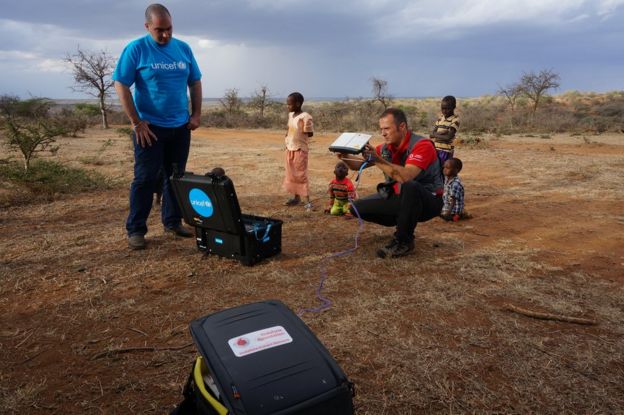How mobile tech is improving global disaster relief
 |
| mobile tech is improving global disaster relief |
Yet people are desperate to let their loved ones know they're safe and to find out what's going on."The first questions people always ask when they arrive at a refugee camp are 'Where can I charge my phone?' and 'Is there wi-fi?'," says John Warnes, innovation specialist at the UN High Commissioner for Refugees (UNHCR).
"These often seem to be more important to people than food and water."Administering food, shelter and medical aid is made even harder for aid agencies and non-governmental organisations (NGOs) without proper communications.So some technology companies have been innovating to find ways of meeting these challenges.
Instant hotspot
Telecoms companies have been engaging in larger-scale communications projects in disaster areas around the world, but are also realising the benefits of more portable solutions.
For example, Croatian firm MeshPoint has designed a highly-portable rugged, all-weather wi-fi and 4G mobile device that can connect up to 150 people to the internet at the same time. It contains a built-in battery to enable quick set-up in the most inhospitable conditions.The unit can be used on its own to create a local internet hotspot, or linked to others to form a network for use over a wider area."It's also important for aid agencies trying to co-ordinate their efforts."Earlier this year, the instant network mini kit was deployed in the Kathmandu valley, Nepal, to help restore communications following the devastating earthquake there. And larger versions of its instant network kits have been used in South Sudan and the Philippines.
The smartphone has certainly given people more mobile functionality but at the expense of battery life, so providing energy stations where displaced people can recharge their phones is also becoming increasingly important, Mr Walton argues.Setting network mast amid typhoon destructionImage copyrightVodafone Foundationand a larger version was used in the Philippines following a particularly destructive typhoon"The old Nokia phones would last for days, but smartphones use more power and don't last as long," The Foundation has developed charging blocks that can be screwed on to makeshift tables. They feature 20 USB ports for phone cables, can be linked in groups of three, and are recharged using generators or solar panels.



0 comments: